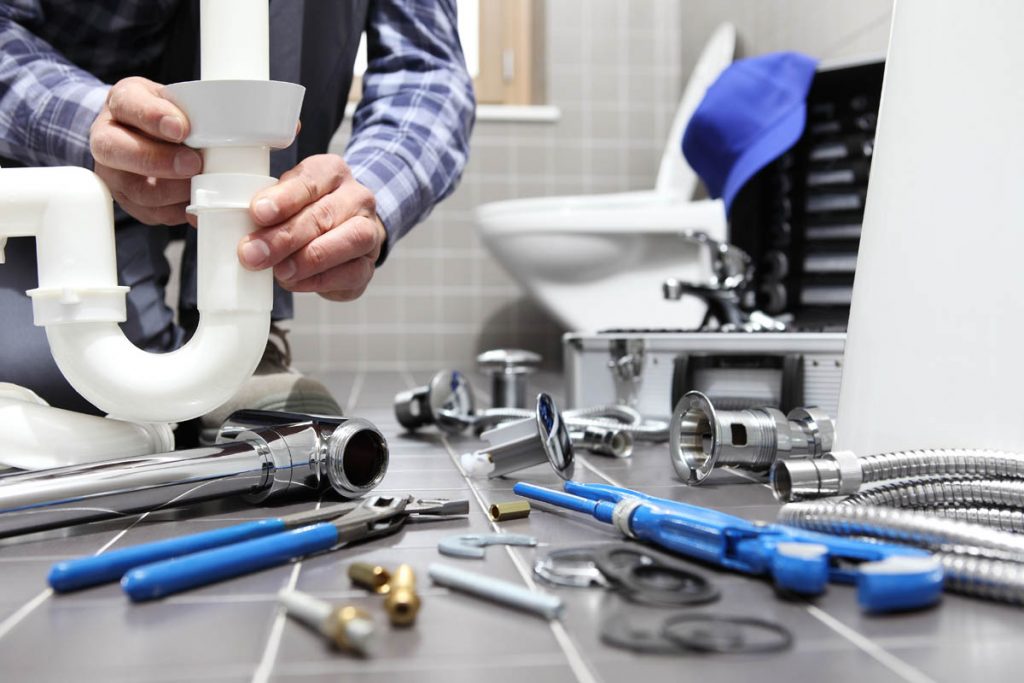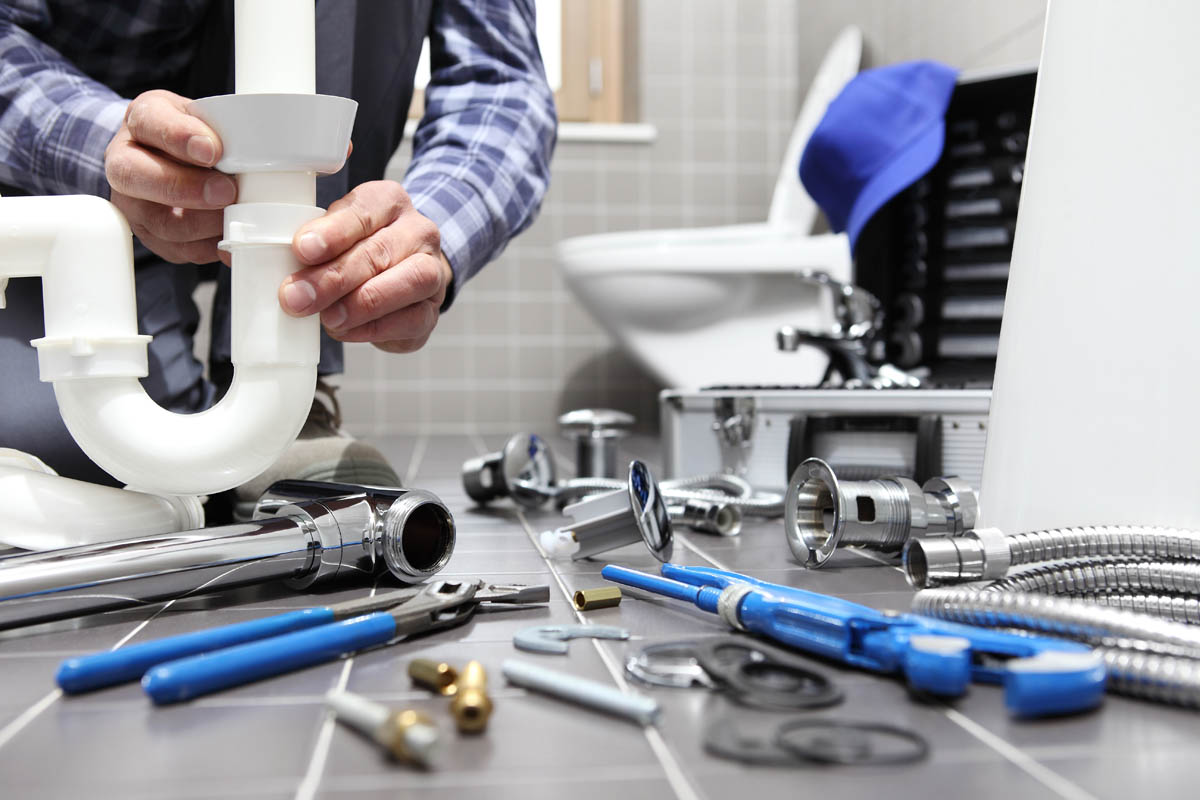How To Optimize Your Plumbing Website For Sales Leads
Running a plumbing business comes with a constant challenge—finding new customers. Word-of-mouth referrals help, but relying on them alone leaves too many slow weeks. A well-optimized website turns online visitors into paying customers, keeping your schedule full.
To generate more leads, your website needs the right mix of visibility, speed, and customer-friendly features. “Within the first few seconds of seeing your site, potential customers will decide whether you are worth it or not,” states Forbes. A slow-loading page or unclear contact information can drive potential clients away. On the other hand, an easy-to-navigate, search-optimized site makes it simple for customers to find and contact you.
In this guide, learn how to:
- Improve search engine rankings with strong SEO practices
- Make your website more accessible for a better user experience
- Optimize call-to-action buttons for higher conversions
- Use customer reviews and trust signals to increase credibility
Small changes can have a big impact. Let’s break down the steps that help more visitors turn into customers.

Understanding Search Engine Optimization (SEO) for Plumbing Websites
What Is SEO and Why Does It Matter for Plumbing Businesses?
Search Engine Optimization (SEO) is the process of improving a website’s visibility on search engines like Google. A well-optimized plumbing website ranks higher in search results when people look for plumbing services. This means more potential customers find your business before they find your competitors.
SEO matters because most people don’t go past the first page of search results. If a plumbing business appears on page two or lower, it misses out on valuable traffic and sales leads.
How SEO Drives Business Growth and Customer Acquisition
A strong SEO strategy does more than just bring more visitors to a website. It connects a business with the right customers—homeowners and businesses actively searching for plumbing services.
- Higher Visibility: The higher a site ranks in search results, the more people see it, leading to increased inquiries and bookings.
- Quality Traffic: SEO attracts visitors who need plumbing services, making them highly likely to become paying customers.
- Cost-Effective Marketing: Unlike paid ads, organic search traffic from SEO doesn’t require continuous spending, making it a long-term investment.
- Local Customer Reach: With targeted local SEO, plumbing companies can reach homeowners within their service area, increasing leads from nearby communities.
Key SEO Factors That Influence Search Rankings
Several factors determine how well a plumbing website ranks on search engines. Google and other search engines use complex algorithms to decide which sites appear first. These key elements have a direct impact on rankings:
- Keyword Optimization: Using the right keywords ensures that a plumbing site appears when potential customers search for relevant services.
- Website Speed: A slow-loading website frustrates visitors and negatively affects rankings.
- Mobile Responsiveness: Most searches happen on mobile devices, so a site must be mobile-friendly to maintain visibility.
- Content Quality: Informative, well-structured content helps answer customer questions, improving search rankings and engagement.
- Backlinks: Links from other quality websites signal to search engines that a site is credible and valuable.
- User Experience (UX): Easy navigation and clear call-to-action buttons encourage visitors to stay longer and contact the business.
SEO as a Long-Term Investment
SEO for plumbers is not an overnight fix—it requires consistency. Search engine algorithms change regularly, so plumbing businesses must stay updated with best practices. Over time, a well-optimized website generates a steady flow of organic traffic, reducing reliance on paid ads.
Understanding SEO lays the foundation for a successful plumbing website. Next, choosing the right keywords ensures that the website reaches the right customers.
Identifying Target Keywords for Plumbing Services
Why Keyword Research Matters

People searching for plumbing services online use specific words and phrases. “Keyword research is a process of finding words, queries, and phrases that users are searching for, which means a keyword that has search volume,” says Search Engine Journal. Identifying the right keywords helps connect your website to these potential customers. Without proper keyword research, your site may not rank well, reducing the chances of attracting plumbing leads.
Search engines like Google analyze the words on your site to determine its relevance to user searches. When your content aligns with commonly searched terms, your website stands a better chance of appearing on the first page of search results.
How to Find the Best Keywords for Plumbing Services
Choosing the right keywords requires a combination of research and strategy. Focus on words that potential customers actually use. Here’s how to do that:
- Think Like a Customer – Consider what someone in need of a plumber would type into Google. Would they search for “emergency plumber near me” or “clogged drain repair”?
- Use Keyword Research Tools – Platforms like Google Keyword Planner, Ahrefs, and SEMrush show search volume, competition, and related terms.
- Analyze Competitor Keywords – Checking which keywords other successful plumbing businesses target can reveal opportunities.
- Focus on Local Keywords – Many customers search for services near them. Keywords like “plumber in [city]” or “[city] water heater repair” help attract local leads.
- Include Service-Specific Keywords – General terms like “plumber” are competitive. Phrases like “toilet installation,” “pipe leak repair,” or “sewer line inspection” target specific needs.
- Consider Long-Tail Keywords – These phrases contain three or more words and often indicate higher intent. For example, someone searching “24-hour emergency plumber in Dallas” is likely in urgent need of service.
Finding the Balance Between Search Volume and Competition
High search volume keywords mean more potential traffic, but they also come with more competition. Low-competition keywords may be easier to rank for but might not bring in significant traffic. Striking a balance is key:
- Check keyword difficulty scores in research tools to find terms that aren’t overly competitive.
- Target a mix of high-volume, medium-competition keywords and lower-volume, low-competition keywords.
- Experiment with different keywords and track performance over time.
Refining Your Keyword Strategy
Keyword research isn’t a one-time task. Trends change, and customer search habits shift. Regularly reviewing keyword performance ensures your plumbing website stays optimized for relevant searches.
Which plumbing services do you want to promote most? Think about what brings in the best leads and adjust your keyword strategy accordingly. Aligning your keywords with customer demand increases the chances of turning visitors into paying clients.
Creating High-Quality Content for Plumbing Topics
Guidelines for Crafting Content That Addresses Customer Issues and Questions

People search online for plumbing solutions when they have problems. Addressing these concerns with useful content builds trust and positions your business as a go-to expert.
- Answer Common Plumbing Questions – Homeowners often ask, “Why is my water pressure low?” or “How do I fix a leaky faucet?” Writing blog posts and FAQ pages that answer these questions directly keeps visitors engaged.
- Provide Step-by-Step Guides – Quick troubleshooting guides for minor plumbing issues keep potential customers on your website longer. When they need professional services, they remember your brand.
- Use Simple and Clear Language – Avoid complex plumbing jargon. Writing in plain terms ensures that both homeowners and business owners understand your message.
- Include Visual Content – Infographics, images, and short explainer videos break up text and help customers grasp plumbing concepts more easily. Linking these to their external sources will also help improve your rankings.
- Update Content Based on Trends – Seasonal plumbing issues, such as frozen pipes in winter or clogged drains in fall, offer opportunities to create timely, relevant posts.
“Your goal is to keep customers on your website by presenting high-quality, engaging content while establishing your company as an expert in its field and generating goodwill,” says Business.com. Fresh, engaging content not only answers questions but also improves search rankings by keeping users on your website longer.
Using Service Pages to Highlight Specific Plumbing Services Offered
Dedicated service pages make it easy for potential customers to find solutions without digging through your website. Well-structured service pages improve search rankings and convert visitors into leads.
- Focus on One Service Per Page – A separate page for water heater repairs, drain cleaning, and pipe replacements makes it easier for search engines to connect users with the right information.
- Include Service Area Details – Mentioning the cities and neighborhoods you serve enhances local SEO and helps local customers find your business.
- Add Before-and-After Photos – Real images of completed plumbing work build credibility and show potential customers the quality of your services.
- Answer Common Service-Related Questions – Each page should address typical customer concerns, such as costs, timelines, and guarantees.
- Use Clear Calls-to-Action (CTAs) – Phrases like “Schedule Your Appointment Today” or “Get a Free Quote” encourage visitors to take action.
Organized service pages make it easier for customers to navigate your site, find the service they need, and contact you for help.
Regularly Updating the Website with Fresh Content
Why Fresh Content Boosts Plumbing Leads

Google favors active websites. Regular updates show search engines that your plumbing business is relevant and engaged. This increases your chances of ranking higher in search results, leading to more potential customer visits.
Fresh content also builds trust with customers. A website featuring recent blog posts, updated service pages, and industry news signals an active business. Visitors see this and feel more confident in reaching out for services.
Here’s how consistent updates benefit your site:
- Higher search engine rankings: Google prioritizes websites that frequently add valuable content.
- Increased customer engagement: New posts give visitors reasons to return, keeping them connected to your brand.
- More keyword opportunities: Adding fresh content allows you to target new search terms related to plumbing services.
- Showcasing industry expertise: Informative articles position you as a knowledgeable and trustworthy expert.
How to Keep Content Fresh and Engaging
Maintaining a steady stream of content requires planning. A content calendar organizes topics, sets deadlines, and ensures frequent updates.
Consider these content ideas:
- Blog posts about common plumbing issues: Explain how homeowners can handle minor problems and when to call a professional.
- Service updates: Highlight new offerings or improvements to existing ones.
- Customer success stories: Share testimonials and case studies to build trust.
- Seasonal maintenance tips: Offer timely advice, like preventing frozen pipes in winter.
- FAQs: Answer common plumbing-related questions to help customers and improve SEO.
Setting a Realistic Update Schedule
Consistency matters more than frequency. Posting once a week or biweekly keeps content fresh without overwhelming your schedule.
- Weekly or biweekly blog posts: These help maintain an active presence and attract recurring visitors.
- Monthly service page reviews: Ensure information remains accurate and up-to-date.
- Quarterly content audits: Identify outdated posts and refresh them with new insights.
Maximizing Content Impact
New content doesn’t have to live on your website alone. Repurpose it for greater reach:
- Share blog posts on social media: Drive traffic back to the site.
- Send monthly newsletters: Keep customers informed and engaged.
- Turn posts into videos: Engage audiences who prefer visual content.
Regular content updates turn a plumbing website into a lead-generating machine. More visibility, engaged customers, and increased trust lead to more sales calls and service requests.
Creating a Strong Brand Identity Online
A strong brand identity helps a plumbing business stand out online. Customers need to recognize and trust your brand the moment they land on your website or see your content. A consistent and professional look across all digital platforms builds credibility and increases lead conversions. “Showcasing your brand to your prospective customers is one of the most important things that you can do. By clearly establishing who you are, what you represent and what you stand for, you increase the chances of your customers buying from you,” emphasizes Forbes.
Elements of a Recognizable Plumbing Brand

Brand identity goes beyond a logo. It encompasses visuals, messaging, and tone. Every brand element should reflect professionalism and reliability.
- Logo and Color Scheme: A well-designed logo and a consistent color palette make your business instantly identifiable. Use colors that evoke trust, such as blue or green.
- Consistent Typography: Stick to one or two fonts for a clean and professional look. Avoid flashy or hard-to-read styles.
- Clear Brand Voice: Whether your tone is friendly, authoritative, or informative, keep it uniform in all communications.
- Unique Selling Proposition (USP): Highlight what sets your plumbing business apart—whether it’s 24/7 service, eco-friendly solutions, or years of experience.
Building a Cohesive Brand Through Web Design and Content
Your website acts as your digital storefront. A disorganized or outdated site weakens brand perception, while a well-designed one strengthens it.
- Professional Website Layout: A clean, easy-to-navigate site with a well-structured menu improves user experience and leaves a strong impression.
- Consistent Branding on Every Page: Use the same logo, colors, and fonts across all pages to maintain a professional look.
- Compelling Homepage Message: Clearly state your plumbing services, credentials, and unique benefits within seconds of a visitor arriving.
- Engaging Content: Blog posts, service pages, and FAQs should reflect your brand’s voice while addressing customer needs.
Leveraging Social Media for Brand Recognition
A digital brand does not stop at a website. Social media strengthens your identity and builds relationships with potential leads.
- Branded Profiles: Use the same profile picture, cover image, and bio across all platforms for instant recognition.
- Consistent Post Style: Maintain a uniform approach in the way you craft captions, images, and videos.
- Interactive Content: Engage followers with polls, Q&A sessions, and behind-the-scenes content that aligns with your brand personality.
- Customer Testimonials and Before/After Photos: Showcasing real results builds trust and reinforces your brand’s reliability.
Creating a cohesive brand identity reinforces professionalism and trust. A well-branded website and social media presence help convert more visitors into sales leads.
Utilizing Local SEO Strategies to Attract Local Clients
Plumbing services thrive on local customers. When someone needs a plumber, they usually search for one nearby. Strong local SEO ensures your business appears in those searches, bringing in homeowners and businesses looking for immediate help. Here’s how to optimize your website to attract more local clients.
Registering the Business on Google My Business for Local Visibility

Google My Business (GMB) acts as a direct line to local customers. A fully optimized GMB listing increases the chances of appearing in local search results and Google Maps. Here’s what to do:
- Claim and verify your listing – Visit Google My Business and follow the steps to confirm ownership of your business.
- Provide complete and accurate details – Business name, address, phone number (NAP), website, and hours of operation should be consistent across all platforms.
- Choose the right category – Selecting “Plumber” as your primary category helps Google understand your services.
- Upload high-quality images – Add photos of your team, equipment, completed jobs, and your office or service vehicle.
- Encourage and respond to reviews – Positive customer reviews boost local rankings, and responding to them increases engagement.
- Enable messaging – Customers can contact you directly from your GMB listing, which helps convert leads faster.
- Post regular updates – Promotions, special offers, or seasonal services keep your listing fresh and engaging.
Incorporating Local Keywords to Attract a Community-Centered Customer Base
Local keywords help search engines connect your plumbing business with people in your area. Without them, a website might struggle to appear in local search results. Here’s how to effectively use them:
- Use city and neighborhood names – Phrases like “emergency plumber in Dallas” or “water heater repair in Brooklyn” make localization clear.
- Optimize service pages – Add location-based keywords to service descriptions, such as “Drain cleaning in San Diego homes.”
- Integrate local terms naturally – Instead of keyword stuffing, weave them smoothly into headings, meta descriptions, and URLs.
- Create location-specific content – Blog about local plumbing issues, such as “Common Plumbing Problems in Phoenix Homes,” to attract regional traffic.
- Update business listings consistently – Ensure NAP information matches across Google My Business, Yelp, HomeAdvisor, and other directories.
- Leverage structured data – Use local business schema markup so Google can display your contact details in search results.
Local SEO gives your plumbing business the visibility needed to connect with nearby prospects. Strong GMB optimization and strategic keyword placement will push your website ahead of competitors in local search rankings.
Implementing a User-Friendly Website Design
Easy Navigation Keeps Visitors Engaged

When potential customers land on a plumbing website, they want quick access to the information they need. If they struggle to find services, contact details, or pricing, they will leave and visit a competitor’s site instead.
- Clear menu structure – Use a straightforward navigation bar with logically grouped categories like “Services,” “About Us,” and “Contact.”
- Clickable phone numbers – Ensure that mobile users can tap on your phone number to call instantly.
- Simple contact forms – Limit the required fields to name, phone number, and service inquiry to increase form submissions.
- Logical page hierarchy – Organize pages so visitors can move seamlessly from general topics to detailed service descriptions.
Website Design Impacts SEO and Lead Conversion
Search engines prioritize websites that offer a smooth user experience. A well-structured site not only helps visitors but also makes it easier for search engines to crawl and rank content.
- Fast-loading pages – Websites that load in under three seconds reduce bounce rates and improve rankings.
- Mobile-first design – Google ranks mobile-friendly websites higher, and most users browse from smartphones.
- Relevant internal links – Helping users navigate between related pages increases their time on site, boosting search rankings.
- Readable fonts and colors – High-contrast text and clean typography improve readability, keeping visitors engaged longer.
An organized, easy-to-use website turns more visitors into paying customers. Simple design choices like fast loading speeds, intuitive navigation, and clear calls-to-action increase both lead generation and SEO rankings.
Showcasing Customer Testimonials and Reviews
The Power of Social Proof in Building Trust with New Customers
People trust other people more than they trust businesses. According to BrightLocal, “[R]esearch shows that reviews can directly influence a shopper’s decision to purchase when displayed alongside product information.” A potential customer looking for plumbing services wants proof that your company delivers quality work. That proof comes from real testimonials and reviews.
- Most customers read online reviews before visiting a business.
- Positive customer feedback increases conversion rates and helps establish credibility.
- Google and other search engines factor in reviews when ranking local businesses.
- Displaying testimonials builds trust by showing real experiences from satisfied customers.
New visitors to your website will feel more comfortable reaching out when they see that others have had a great experience.
Strategies for Collecting and Displaying Testimonials on Your Website
Getting quality reviews from satisfied customers requires a system. Many happy clients won’t leave a review unless asked. Make it easy for them.
- Follow Up After Service: Send a simple email or text with a direct link to your review page.
- Incentivize Feedback: Offer a discount or giveaway entry for leaving a review.
- Utilize Google and Facebook: Encourage customers to post on high-visibility platforms.
- Showcase Video Testimonials: A short clip of a satisfied customer sharing their experience adds authenticity.
- Feature Reviews on Your Homepage: A dedicated section with customer quotes boosts trust.
- Use Star Ratings: Displaying stars beneath each testimonial makes reviews more eye-catching.
- Create a “Customer Stories” Page: A page dedicated to detailed testimonials highlighting success stories.
Placing reviews strategically throughout your site increases their impact. A glowing testimonial near a contact form can push a hesitant visitor to take action.
Using Call-to-Actions (CTAs) to Encourage Lead Generation
Crafting Effective CTAs for Different Pages on the Plumbing Website
Call-to-actions (CTAs) guide visitors toward taking the next step, whether it’s scheduling a service, requesting a quote, or signing up for a newsletter. A well-crafted CTA improves conversion rates by making the next move clear and compelling.
- Homepage CTAs: Use action-driven language such as “Schedule Your Free Estimate Today” or “Call Now for Fast Plumbing Repairs.” Highlight urgency with phrases like “Same-Day Service Available.”
- Service Pages: Tailor CTAs to match each service. For example, on a page about emergency plumbing, a CTA like “Get 24/7 Emergency Assistance Now” works better than something generic.
- Blog Posts: Offer value-driven CTAs like “Download Our Plumbing Maintenance Guide” or “Subscribe for More Home Plumbing Tips.”
- Contact Page: Reinforce trust with phrases such as “Reach Out to Your Trusted Local Plumber” or “Request a Quote with No Obligation.”
Best Placement Practices for CTAs to Convert Visitors to Leads
Where a CTA appears on a webpage influences its effectiveness. Strategic placement increases the likelihood of user engagement.
- Above the Fold: Place at least one CTA in the top section of the page so visitors see it without scrolling.
- Within Content: Integrate CTAs naturally inside blog posts, service descriptions, and testimonials to catch attention when engagement is high.
- Sticky Headers or Footers: A fixed CTA button such as “Book a Service” following users as they scroll keeps the option available at all times.
- Exit-Intent Popups: When visitors move their cursor toward closing a tab, trigger a popup with a CTA like “Before You Go, Claim 10% Off Your First Service!”
- After Forms or Videos: If someone watches a service demonstration or fills out a contact form, follow up with another CTA leading to the next step, like “Speak to a Plumbing Expert Now.”
Every CTA should stand out with bold colors, easy-to-read fonts, and contrasting design elements. Simple yet persuasive wording combined with strategic placement will drive more leads from your plumbing website.
Start Turning Clicks Into Customers Today
You’ve got the tools, tips, and tactics. Now, it’s time to bring it all together. Boosting sales leads through your plumbing website doesn’t require guesswork—only smart moves that deliver proven results.
Let’s review what works:
- Target keywords help your site show up when locals search for plumbing services they need right now.
- Well-written content answers customer questions and earns trust before they ever pick up the phone.
- Local SEO tactics like Google Business Profile optimization and local backlinks point search engines—and people—to your service area.
- A clean, user-friendly layout with strong branding keeps visitors on your site, not your competitor’s.
- Social proof through reviews and testimonials builds credibility fast and gives new customers a reason to call.
- CTAs in the right places turn page views into real service requests, not just traffic stats.
Each of these steps builds momentum. Put a few together, and you’ll see a shift. Focus on all of them, and your plumbing website becomes your hardest-working salesperson—available 24/7, rain or shine.













